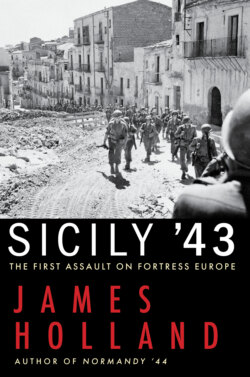Читать книгу Sicily '43 - James Holland - Страница 9
На сайте Литреса книга снята с продажи.
Note on the Text
ОглавлениеWriting a campaign history such as this is a complicated undertaking. Although dealing with American, British, Canadian, German and Italian units across the armed services, I’ve tried to keep the numbers of unit names as low as possible. To help distinguish one side from another, I have used a form of vernacular, styling German and Italian units more or less as they would be written in German and Italian – not to be pretentious in any way, but just to reduce the potential for confusion. Having said that, it seemed to me that to describe a Tiger tank company as the 2. Schwere Panzerkompanie was perhaps taking this too far, so I have called it more simply 2. Heavy Panzer Kompanie.
For those who are not familiar with the scale of wartime units and the numbers involved, the basic fighting formation on which the size of armies was judged during the Second World War was the division. German panzer divisions were an all-arms formation of motorized infantry, artillery and tanks; panzer-grenadier divisions had fewer panzers – tanks – and more motorized infantry: a grenadier was simply an infantryman who was provided with motor transport to get from A to B. Infantry divisions had much less motorization by 1943 as fuel and other shortages were increasingly keenly felt within the Reich.
As a rule of thumb, a division was around 15,000 men, although some divisions could have as many as 20,000. Two divisions or more made up a corps, usually denoted in Roman numerals to distinguish them. Two corps or more constituted an army, and two armies or more an army group. Going back down the scale, American, German and Italian divisions were divided into regiments, while British and Canadian divisions were divided into brigades. Confusingly, the British did have regiments too, but in the case of infantry these were parent organizations and never fielded as a whole. US and German regiments and British brigades were much the same, each consisting of three core components, which in the case of an infantry regiment/brigade were battalions, although the Americans termed these ‘regimental combat teams’ or RCTs. An infantry battalion was around 850 men, divided into companies of some 120 men, each of which in turn broke down into three platoons and finally to the smallest formation, the ten-man squad, Gruppe or section, depending on nationality. I hope this helps.
